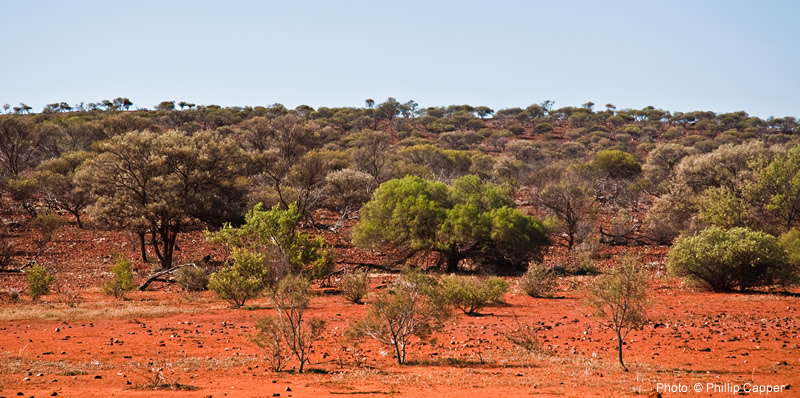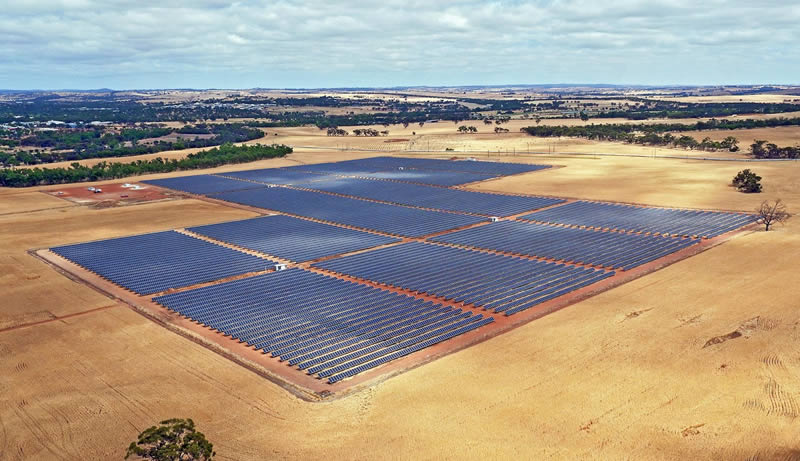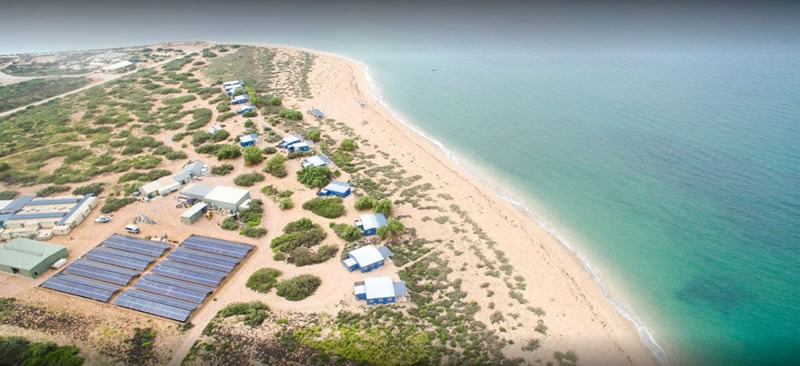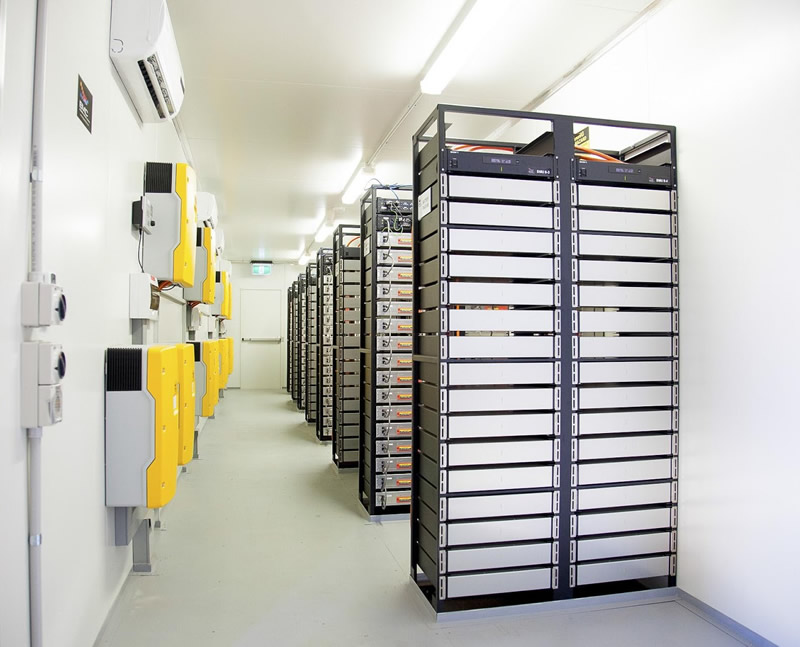The parliament of Western Australia has been conducting an important inquiry into microgrids over the past year. A financial committee is looking at microgrid policy, technology and at the potential of microgrids to add jobs and contribute to the overall economy of the state. Judging from testimony provided to the committee, utilities, renewable energy developers, scientific institutions and clean energy advocates are all hoping that the report will spur support for the microgrid industry. They want to see the government eliminate regulatory barriers, establish a sound framework for the continued growth of the microgrid industry, and provide incentives that will propel this new technology into a commercial phase after several years of successful pilot projects. They believe that microgrids will succeed in lowering energy costs for Western Australia’s ratepayers, and cut down on costly power outages.

Western Australia: the world’s most spread out grid
Western Australia is a massive state (eleven times bigger than Texas), and its electric grid – which only manages to cover one third of the state – sprawls over an area the size of the UK, serving a highly scattered population of a million people. The remaining two thirds has limited grid infrastructure, with communities and businesses in these areas typically generating electricity from diesel or gas. After servicing the major city of Perth, the grid snakes up and down the West Australian coast and occasionally shoots long spurs out to the east through uninhabited landscapes where it connects to mining outposts and farming across the wheat belt region. Farmers raise livestock or grow wheat in vast fields that disappear over the horizon – stations can cover over a million acres. The huge distances mean that long stretches of single power lines – sometimes over 300 km – are often needed to serve very small towns. Facing constant threats from severe weather and wildfires, these power lines suffer frequent blackouts and represent a major headache for the utilities that have to maintain them.
In recent years, as the cost of solar PV and batteries have declined rapidly, utilities have begun to realize that microgrids will be able to deliver their remote customers power more reliably and at lower cost than the current distribution system.
One utility, Western Power, has tested hybrid systems combining solar PV, batteries and backup diesel generators on “fringe-of-grid” farms, and shown that solar was able to supply 92 percent of the farms’ electricity while the microgrids succeeded in cutting power outages by 90 percent. Last year Western Power – which maintains a whopping 63,000 miles of power lines – got permission to test over sixty stand-alone power systems. It estimates that it has thousands of customers who could benefit from microgrid technology, while saving the utility on maintenance costs and infrastructure upgrades.

Engineer Toby Price, who formerly developed microgrids for Energy Made Clean (EMC), says his company designed many stand-alone energy systems that helped take farmers off the grid. In the wake of bush fires that can frequently be started by power lines, they often don’t want poles and wires running across their land, and were eager to see if microgrids could improve reliability. EMC was also contracted to build one Australia’s biggest renewable microgrids in the town of Kalbarri, midway up the coast of Western Australia. A popular tourist destination renowned for its beaches and beautiful landscapes, Kalbarri sits at the end of a 140 km distribution line, and was plagued by power outages. One fault could shut down the entire line. Now a new, all-renewable 5 MW microgrid is under construction, featuring two 800 kW wind turbines, integrated residential solar, and a 5MW/ 4.5MWh battery with a minimum of 2 MWh capacity reserved for reliability services. Kalbarri is viewed as a test case for many other “fringe-of-the-grid” communities that suffer from unreliable power and high cost of supply.

Price says “Across the country we are shutting down coal plants. It’s just that in Western Australia, grid challenges from intermittent resources are coming faster due to the smaller scale of our grid, and rapid investment in behind-the-meter renewables. Renewable energy and batteries have applications to solve these problems in a myriad of ways. Microgrids are becoming cost effective.” HOMER Pro, he adds, has been a crucial tool for analyzing the engineering and financial feasibility of different types of microgrid projects, and is used by many hybrid system designers in the region.
Uncertain federal energy policy is driving Australia’s states to act
One factor lending urgency to the Western Australia microgrid inquiry is uncertainty about Australian national energy policy. Much like the U.S., Australia has suffered from a roller coaster of changing administrations that have radically different views on energy; now the two main political parties have starkly divergent views on what Australia’s energy future should look like. Australia is a major coal producer, and the current government officially supports the country’s coal industry. In 2016 and 2017 over half the country’s power was generated by coal, and at international climate talks in Poland at the end of 2018, Australia was the only other country to join the U.S. at a Trump administration pro-coal event. Australia also refuses to commit to phasing out coal. Meanwhile the country’s renewable energy targets are set to expire in 2020 and it’s unclear what will replace them.
The Clean Energy Council, Australia’s major trade association for renewable energy developers, and others lament the federal government’s lukewarm commitment to renewable energy. However, the national government is under pressure from consumers who complain about galloping electricity costs, increasing electricity outages, and poor energy access for the country’s remote communities, so it has recently announced a modest amount of funding for research into microgrid feasibility.
Australian renewable energy markets continue to grow despite lack of national government support
Even if the party in power is not wildly supportive of renewable energy, the Australian market is evolving rapidly, simply because renewable energy is emerging as the most cost-effective option. The clean energy sector broke records in 2018, creating over 10,000 new jobs and committing to over $20 billion worth of investment in new wind and solar. Two million – or nine percent – of homes now have solar in Australia, where the national population is almost 25 million. That’s compared to the U.S., which has also reached a threshold of two million solar homes, but in a population of 327 million!
According to a report published last year by the national science agency, the Commonwealth Scientific and Industrial Research Organisation (CSIRO) and the Australian Energy Market Operator (AEMO), there is no longer any business case for the use of fossil fuels in new energy projects in Australia. Solar and wind are now cost-effective even with batteries, according to the report. “This also holds when the cost of fossil generation technology is adjusted for climate policy risk or not,” said CSIRO’s chief economist and lead author Paul Graham.

Western Australia has yet to commit to renewable energy goals
In the absence of coherent federal policy on renewable energy, individual Australian states are leading the way in developing renewable energy and carbon emissions reduction targets. And, while Western Australia lags in creating clear clean energy goals, the state is an innovator in microgrid technology, even if that is driven by the accident of its vast geography and unique power requirements.
In testimony to the parliamentary committee exploring microgrid technology, the Western Australia utility Synergy wrote about the urgency of moving beyond the traditional centralized model of utility power generation. It said the centralized model “does not necessarily provide the most reliable and cheapest electricity service for all customers. In some circumstances, alternative, decentralised generation and distribution arrangements may lower costs, improve security and reliability of supply, and/or increase community acceptability of energy supply.” The regional utility Horizon Power discussed developing “a new utility asset class,” called micro power systems, utility-scale power systems that are off-grid and that provide “… remote customers with a full electric utility service, only without requiring a ‘poles and wires’ network connection.”
Confirming the innovation underway in Australia, U.S.-based Navigant research said, “Australia has become an incubator and a laboratory where DER opportunities ranging from remote microgrids to virtual power plants (VPPs) to transactive energy (TE) can be tested and validated.”
The parliamentary committee that is studying microgrids in Western Australia is due to release its report and policy recommendations at the end of May. Maybe that will lay new groundwork for commercialization of distributed renewable projects in the state.
